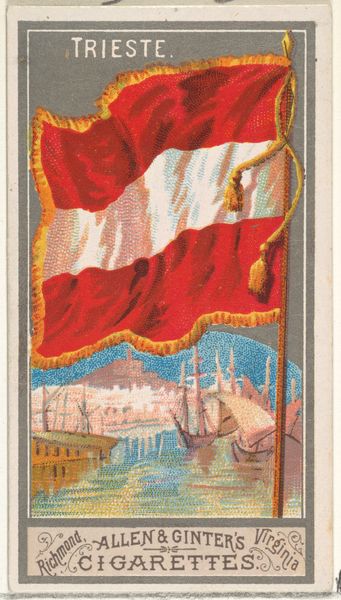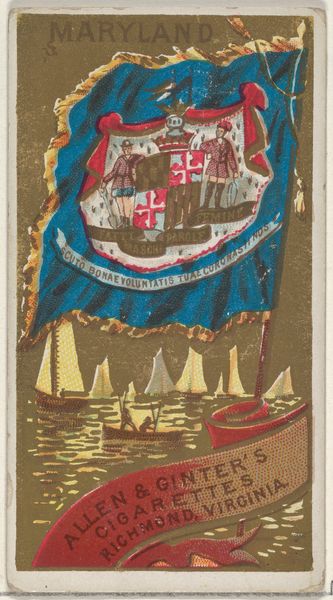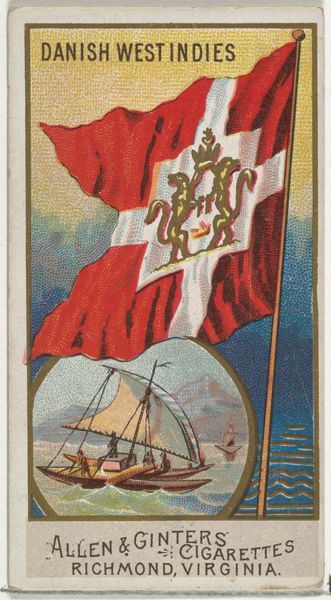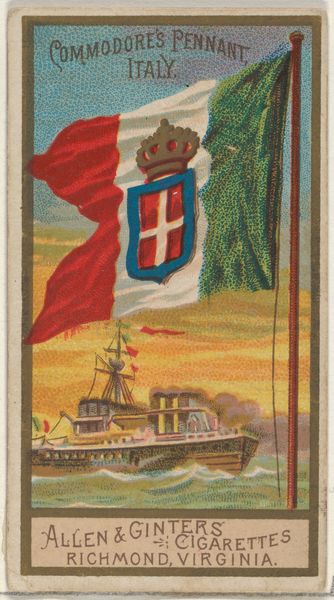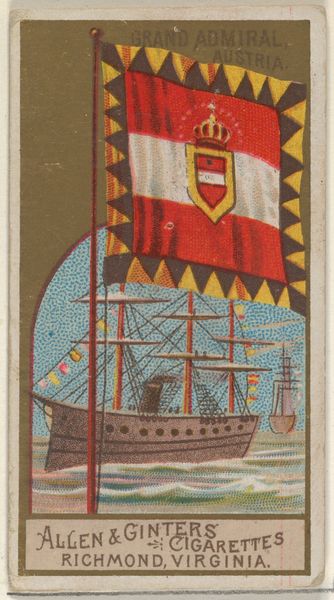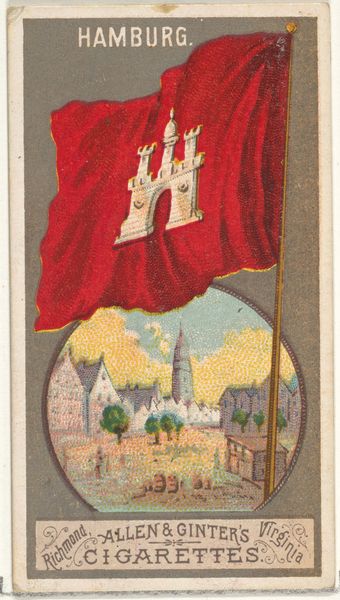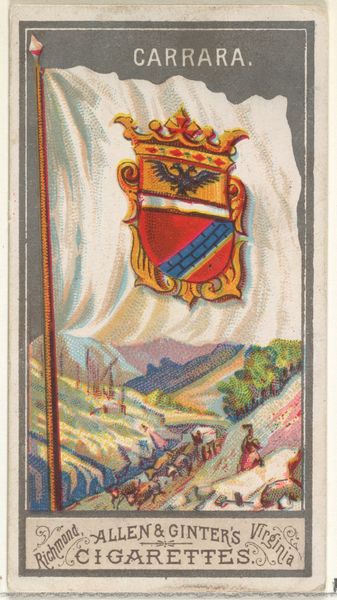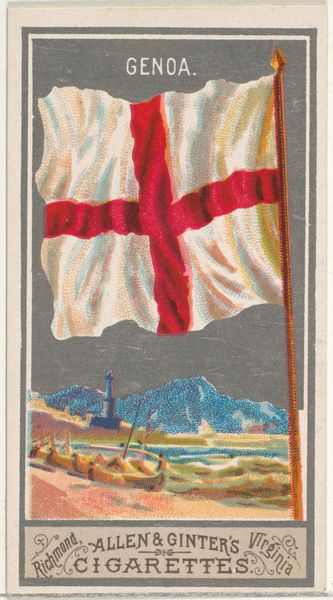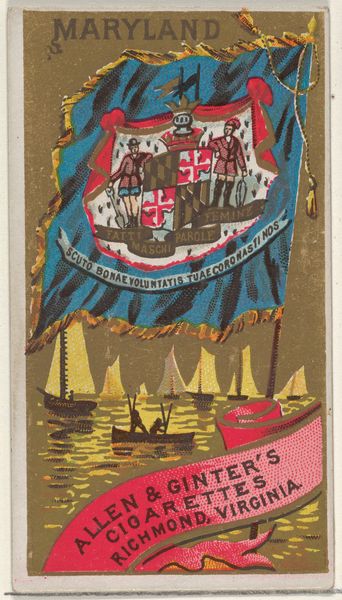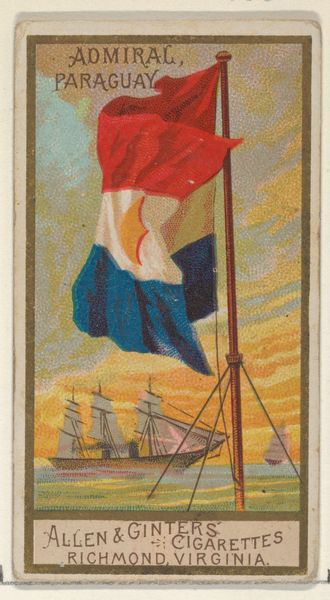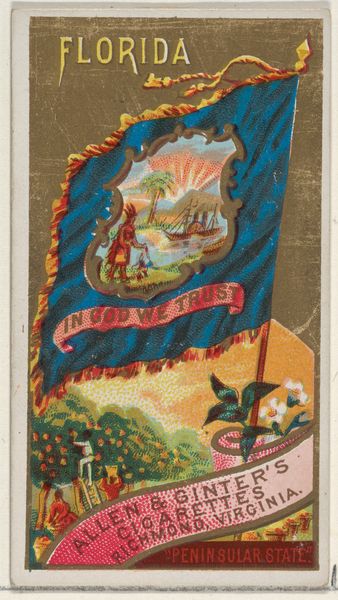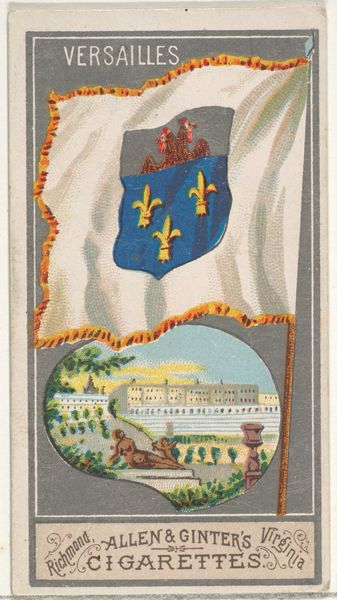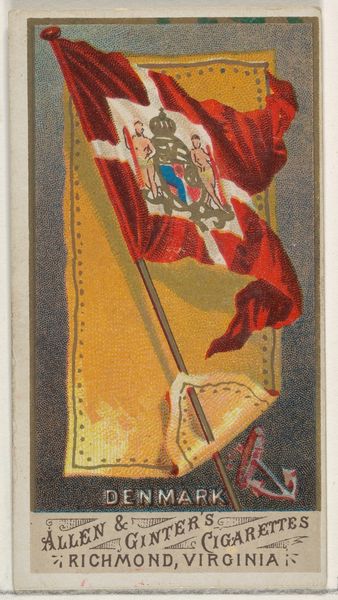
Man of War, Germany, from the Naval Flags series (N17) for Allen & Ginter Cigarettes Brands 1886 - 1891
0:00
0:00
drawing, lithograph, print
#
drawing
#
lithograph
# print
#
oil painting
Dimensions: Sheet: 2 3/4 x 1 1/2 in. (7 x 3.8 cm)
Copyright: Public Domain
Curator: This print, titled "Man of War, Germany, from the Naval Flags series," was created by Allen & Ginter sometime between 1886 and 1891. Editor: Immediately, I notice how detailed this lithograph is for something that was part of a cigarette brand. The use of color, though limited, gives depth to both the flag and the ship depicted below it. Curator: Yes, these were included in cigarette packs as a collectable item. This particular print is really interesting when viewed within the context of the rise of nationalism during that period. The glorification of military strength, particularly naval power, was very common in Imperial Germany, so this imagery spoke to the population's imagination. Editor: Absolutely. It's a consumer good reflecting dominant ideologies back at the consumer. Thinking materially, the paper used, the printing process itself - they are all products of industrial expansion and access afforded through mass production techniques in that era. Curator: And there is a question of authorship when analyzing images made to be included in consumer goods such as these. This was part of a much larger series of flags. Each choice–Germany specifically for this image–reinforces power structures of the late 19th century world and implicitly promotes ideals of the white, male colonial project. Editor: Right, how those narratives are produced and disseminated at scale matters profoundly, particularly when we examine where Allen & Ginter cigarettes are made—Richmond, Virginia—and confront America's history regarding tobacco farming labor at the time this was manufactured. That also becomes an important consideration in how we contextualize meaning. Curator: Precisely. It calls into question issues of globalism, imperialism, and power on multiple levels simultaneously. Editor: So looking closer, what appears at first as merely aesthetically compelling becomes a potent symbol when interrogated this deeply from multiple points simultaneously. Curator: Indeed, I find that by considering both its history and social impact it offers us insights that extend far beyond the picture. Editor: And considering the material factors can open up many exciting areas for understanding these social-historical considerations that resonate for me.
Comments
No comments
Be the first to comment and join the conversation on the ultimate creative platform.
